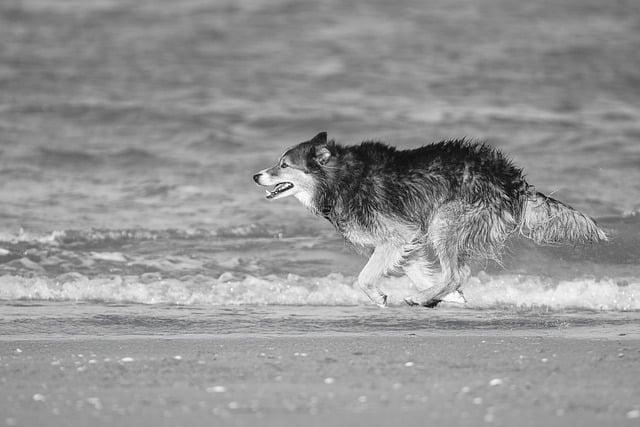Max, a spirited Labrador, once turned every walk into a tug-of-war and every visitor into a jumping jack. Frustrated, his owner considered giving up. But with consistent training and patience, Max began to learn. Over time, he transformed from a chaotic pup into a well-mannered companion. This journey proves that dogs can indeed grow out of bad behavior with the right guidance. Investing time in training not only reshapes their actions but strengthens the bond between pet and owner. Don’t lose hope; change is possible!
Contents
- Understanding the Roots of Bad Behavior in Dogs
- The Role of Training and Socialization in Behavioral Improvement
- Recognizing the Signs of Positive Change in Your Dog
- Implementing Consistent Strategies for Long-Term Success
- Q&A
Understanding the Roots of Bad Behavior in Dogs
To effectively address undesirable behaviors in dogs, it is crucial to delve into their origins. Many factors contribute to a dog’s behavior, including genetics, early socialization experiences, and environmental influences. Understanding these roots can help pet owners identify the underlying causes of their dog’s actions, rather than merely addressing the symptoms. For instance, a dog that exhibits aggression may be responding to fear or insecurity, which can often be traced back to inadequate socialization during critical developmental stages.
Another significant aspect to consider is the role of training and reinforcement. Dogs are highly responsive to their environment, and behaviors that are rewarded tend to be repeated. If a dog learns that barking or jumping leads to attention, even if it’s negative, they are likely to continue that behavior. This highlights the importance of consistent training and positive reinforcement strategies. By rewarding desirable behaviors, owners can effectively reshape their dog’s actions over time.
Moreover, the influence of a dog’s breed and temperament cannot be overlooked. Certain breeds may have predispositions toward specific behaviors, such as herding or guarding. Understanding these traits can help owners tailor their training approaches to align with their dog’s natural instincts. Additionally, recognizing a dog’s individual personality can aid in developing a more effective training plan that resonates with their unique characteristics.
Lastly, it is essential to acknowledge that some behaviors may not simply fade away with age. While dogs can mature and learn over time, persistent bad behaviors often require intervention. Engaging with a professional trainer or behaviorist can provide valuable insights and techniques to modify these behaviors. By investing time and effort into understanding and addressing the roots of bad behavior, owners can foster a healthier, more harmonious relationship with their canine companions.
The Role of Training and Socialization in Behavioral Improvement
Training and socialization are essential components in shaping a dog’s behavior and ensuring they develop into well-adjusted companions. When dogs are exposed to various environments, people, and other animals during their formative months, they learn to navigate the world with confidence. This exposure helps mitigate fear-based reactions and fosters a sense of security, which can significantly reduce undesirable behaviors. A well-socialized dog is less likely to exhibit aggression, anxiety, or excessive barking, making them a joy to be around.
Structured training programs provide dogs with clear expectations and boundaries. Through consistent commands and positive reinforcement, dogs learn to associate good behavior with rewards, such as treats or praise. This method not only encourages compliance but also strengthens the bond between the dog and its owner. Training sessions can be tailored to address specific behavioral issues, allowing for targeted improvement. The more a dog practices desired behaviors, the more ingrained these behaviors become, leading to long-lasting change.
Moreover, socialization is not a one-time event but an ongoing process. Regular interactions with different people, animals, and environments keep a dog adaptable and resilient. Engaging in group classes or playdates can provide valuable opportunities for dogs to learn proper social cues and develop appropriate responses to various stimuli. This continuous exposure helps prevent the development of problematic behaviors that can arise from isolation or lack of experience.
Ultimately, the combination of training and socialization creates a comprehensive approach to behavioral improvement. Owners who invest time and effort into these practices are likely to see significant progress in their dog’s behavior. By fostering a positive learning environment and encouraging social interactions, owners can help their dogs not only grow out of bad habits but also thrive as well-rounded members of the family.
Recognizing the Signs of Positive Change in Your Dog
When observing your dog, it’s essential to look for subtle yet significant changes that indicate a shift towards better behavior. One of the most telling signs is an increase in calmness. If your dog is less reactive to stimuli that previously triggered barking or anxiety, it’s a positive indication that they are learning to manage their emotions more effectively. This newfound tranquility can manifest during walks, playtime, or even when guests arrive at your home.
Another encouraging sign is improved focus during training sessions. If your dog is more attentive and responsive to commands, it suggests that they are beginning to understand expectations and boundaries. This enhanced focus can lead to quicker learning and a willingness to engage in training exercises, which are crucial for reinforcing good behavior. Look for moments when your dog eagerly participates, as this enthusiasm is a strong indicator of their progress.
Social interactions also play a vital role in assessing your dog’s behavioral changes. If your dog shows increased confidence around other dogs and people, it’s a clear sign of positive development. This can include approaching new friends with curiosity rather than fear, or playing more freely with other dogs. Such interactions not only enhance their social skills but also contribute to a more balanced temperament.
Lastly, pay attention to your dog’s overall body language. A relaxed posture, wagging tail, and soft eyes are all signs of a happy and content dog. If your dog is exhibiting these behaviors more frequently, it indicates that they are feeling secure in their environment and are less likely to resort to negative behaviors. Recognizing these signs can help you celebrate the progress your dog is making on their journey towards better behavior.
Implementing Consistent Strategies for Long-Term Success
To foster a harmonious relationship with your canine companion, it is essential to establish and maintain a set of consistent strategies that address undesirable behaviors. Dogs thrive on routine and predictability, which means that inconsistency in training can lead to confusion and frustration for both the pet and the owner. By implementing a structured approach, you can effectively guide your dog towards better behavior and ensure long-term success.
One of the most effective methods is to utilize **positive reinforcement**. This involves rewarding your dog for good behavior rather than punishing them for bad behavior. By focusing on what your dog does right, you create a positive learning environment that encourages them to repeat those behaviors. Consider the following techniques:
- Use treats or praise immediately after your dog exhibits the desired behavior.
- Be consistent with the rewards to reinforce the connection between the behavior and the positive outcome.
- Gradually phase out treats as your dog becomes more reliable, but continue to offer praise.
Another crucial aspect is to establish clear **boundaries and rules**. Dogs need to understand what is expected of them, and this requires clear communication from their owners. Setting consistent rules helps your dog learn acceptable behaviors and reduces the likelihood of confusion. Here are some strategies to consider:
- Define specific areas where your dog is allowed and not allowed.
- Ensure all family members enforce the same rules to avoid mixed signals.
- Be patient and persistent; it may take time for your dog to fully grasp the boundaries.
Lastly, regular **training sessions** are vital for reinforcing good behavior and addressing any issues that arise. Consistency in training not only helps your dog learn but also strengthens the bond between you and your pet. Incorporate the following practices into your routine:
- Schedule short, frequent training sessions to keep your dog engaged.
- Vary the training exercises to maintain interest and challenge your dog.
- Always end on a positive note, ensuring your dog associates training with fun and success.
Q&A
-
Do dogs grow out of bad behavior as they age?
While some dogs may naturally mature and exhibit less undesirable behavior over time, many do not simply “grow out” of bad habits. Consistent training and socialization are crucial for helping your dog develop good behavior patterns.
-
What factors influence a dog’s behavior?
A dog’s behavior can be influenced by various factors, including genetics, environment, and training. Understanding these factors can help you address specific behavioral issues effectively.
-
Can bad behavior be corrected?
Yes, bad behavior can be corrected with the right approach. Implementing positive reinforcement training techniques, providing mental stimulation, and ensuring proper socialization can significantly improve your dog’s behavior.
-
Is it ever too late to train a dog?
It is never too late to train a dog. Dogs of all ages can learn new behaviors and unlearn bad habits. With patience, consistency, and the right training methods, you can help your dog become a well-behaved companion.
while some dogs may outgrow certain behaviors, consistent training and positive reinforcement are essential for lasting change. Investing time and effort into your dog’s development not only fosters good behavior but strengthens your bond for years to come.

大家好,我是彼得潘,專業的手法身體治療師。我喜歡探索和研究各種主題,並透過與人工智慧的合作分享專業、實用、有趣的文章。我們定期進行人工審核,以確保內容的準確性。如果您發現文章中有任何不準確的地方,請隨時與我們聯繫,我們會及時糾正。您可以透過 [email protected] 與我們聯繫。



